2021 closed with the highest electricity prices in the history of Spain. In recent months, the price of MWh has become a fixed figure on the news. However, no one remembers the average price of a year ago: € 28.5 / MWh in February 2021. So it was not news.
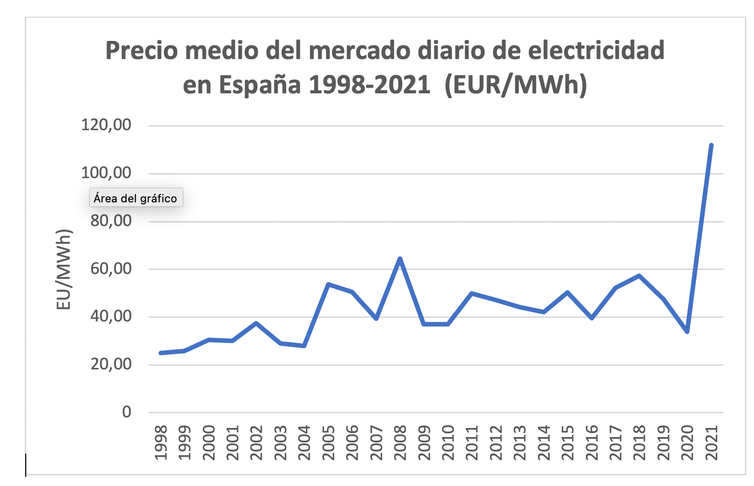
OMIE
One should rather talk about the highest electricity prices in European history, as it is a pan-European phenomenon. In 2021, wholesale electricity prices in the European Union (EU) soared with most countries experiencing record levels in the latter part of the year. Behind this sudden increase is a combination of several structural, circumstantial and incidental factors.
Between the structural factorsmany analysts include the marginalist mechanism of pricing in the EU and the limited room for maneuver of a weakly integrated electricity market.
The economic factors are those associated with the increase in demand for post-pandemic economic recoverywhich in turn increased the prices of natural gas, coal and emission rights.
>
To all this is added coincidental factors if the lack of wind in Europe for many weeks in a row or the strike of a third of the nuclear reactors in France after discovering a potential problem in its facilities. In mid-December 2021, 17 of the 56 French reactors were stopped, forcing the highest levels of electricity imports in French history and bringing interconnections with neighboring countries to the extreme.
Average Monthly Wholesale Electricity Prices
Crises, those of the past
Most doomsayers already speak of an energy crisis and some dare to predict that we are on the brink of an economic crisis comparable to that of the 70s of the last century. The rise in electricity prices in Europe would only be the tip of the iceberg of the shortage of energy supplies worldwide. However, the data do not support such allegations.
Neither oil nor natural gas are at historically maximum prices. Both are far from the highs reached in 2008, just before the collapse due to the economic crisis triggered by the financial crisis. And they are also far from the highs of the past decade.
Although it is true that fuel prices have been showing an upward trend since March 2020, accompanied by the economic recovery and the reduction in Russian supply (25% less to Europe in the fourth quarter of 2021 compared to the same period in 2020), the current level of fossil fuel prices does not invite us to think of a global energy crisis.
International prices of natural gas (left axis, green) and oil (right axis, blue) 2012-2022
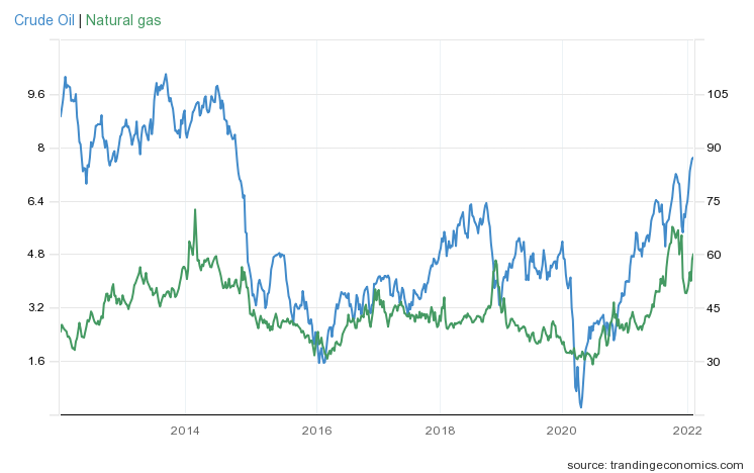
Tradingeconomics.com
The risk is in the oil
But could rising electricity prices cause an economic crisis in the dimensions of the oil crisis 50 years ago? The answer lies in understanding the structure of energy consumption.
Although we feel that electricity is the main form of energy we use and on which we depend the most, the truth is that it does not reach 20% of final energy consumption, compared to the 40% that oil still represents.
In 1973, when oil prices rose, causing the worst economic crisis of the second half of the 20th century, oil accounted for almost half of the world’s final energy consumption. This is why the rise in the price of oil-derived fuel is still, even today, a strong destabilizer of economies (for an example, see what happens in Kazakhstan).
We need to talk about electricity crisis in Europe instead of talking about energy crisis. Just as we should refer to the rise in the price of electricity instead of the rise in the price of energy, as the media does daily. The price of electricity does not generate riots or lame economic activity in Europe (yet).
Final energy consumption by source, 1973-2018
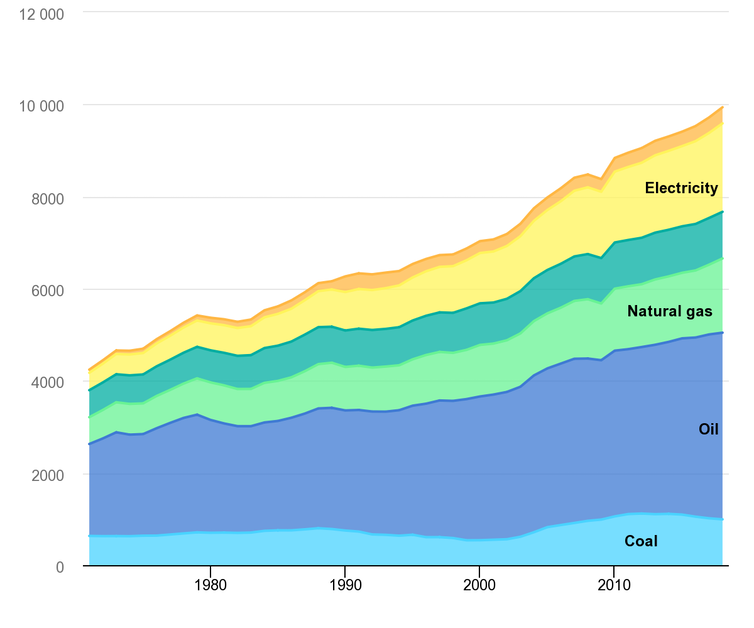
IEA
electrical uncertainty
I’m aware that a good portion of readers will find these rejections trivial compared to their electricity bill. What they want to know is whether electricity will continue to record highs in the coming months or not. This is hard to guess as the structural, temporary and incidental factors we have already listed are still in operation.
If the winter is cold, prices will still remain high.
If the wind does not blow either.
If Russia invades Ukraine, the price of gas will rise.
If the price of gas in international markets continues to rise, electricity prices will undoubtedly reflect this.
If more French reactors have to go unscheduled, European interconnections could reach their borders and force power outages in France and in turn push up prices across Europe.
But at the same time the demand for electricity in spring is less than in winter and sea routes are full of ships gas filled for Europe. The worst weeks may be behind us.
to strengthen ties
Confronted with this scenario, many voices argue that Spain gains energy independence when the country is virtually an electric island.
The European Union recommends that the minimum interconnection capacity between countries be at least 10% of the generating capacity installed in each of them.
Spain is the only country in mainland Europe that does not reach this threshold (international electricity exchanges in 2020 did not reach 3%).
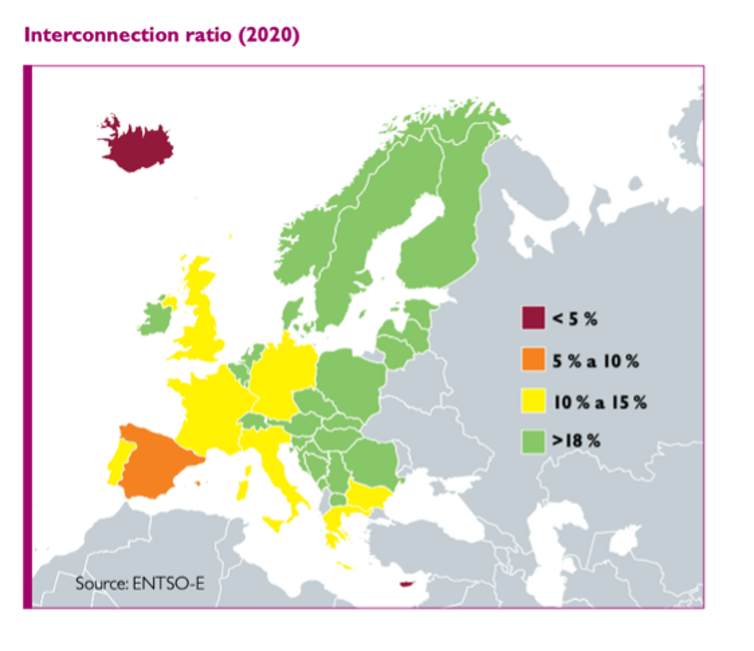
ENTSO-E via REE
Having more and better access to the European electricity system, one of the strongest and safest in the world, increases the security and continuity of supply. In addition, it increases the efficiency of interconnected systems, by taking advantage of the cheapest generation available, by allowing energy to be transported from where it costs less to where it is more expensive. It also increases competition, as energy imports from other countries require agents to make and accept more competitive offers, leading to a reduction in the wholesale price of electricity.
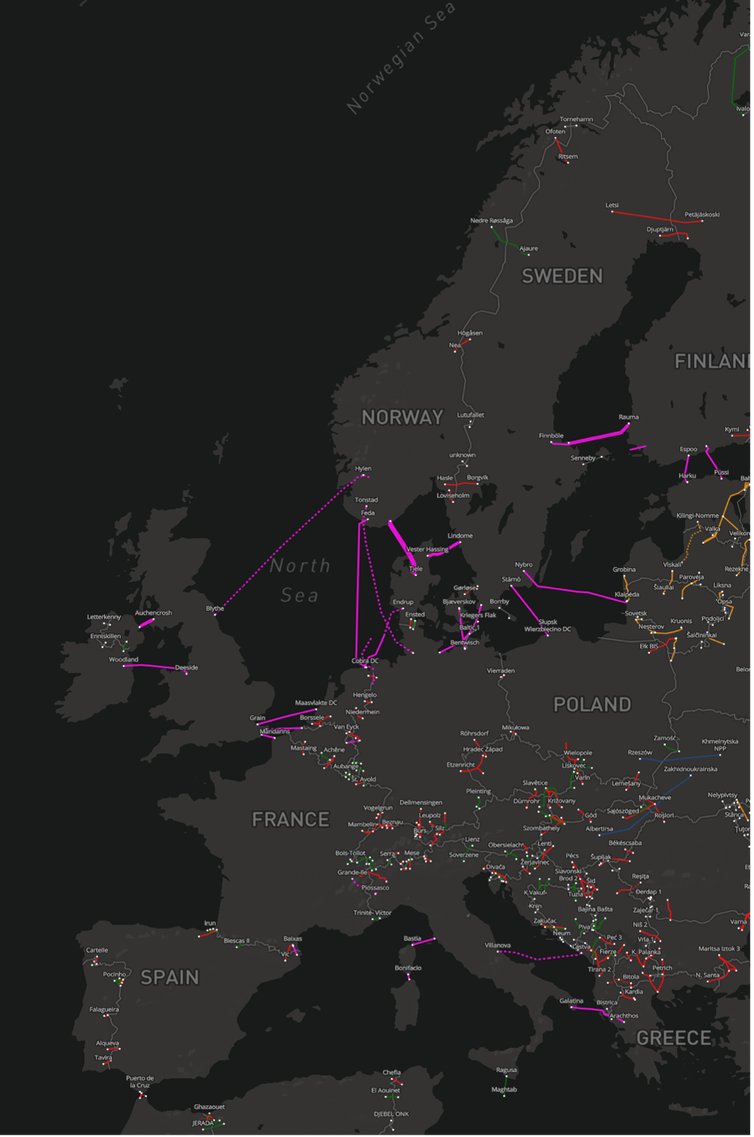
European Association for the Cooperation of Electricity Transfer Network Operators (ENTSO-E)
Given all the above, interconnections play a key role in the integration of electricity markets and will be one of the ways in which electricity prices will return to normal in the future.
In the most immediate, in the remaining weeks of this winter, it is likely that specific historical highs will again be observed in wholesale electricity prices in Spain and Europe. But even the worst of this price crisis could have already passed.
In any case, the available data on prices and the structure of current energy consumption exclude that we are heading in the short term for a global energy crisis in the style of the 1970s.
See Blonde Rods, Professor of History and Economic Institutions. Deputy Director of the Institute for Advanced Research in Business and Economics (INARBE), Public University of Navarre
This article was originally published on The conversation. read the original.
Reference-www.eleconomista.com.mx